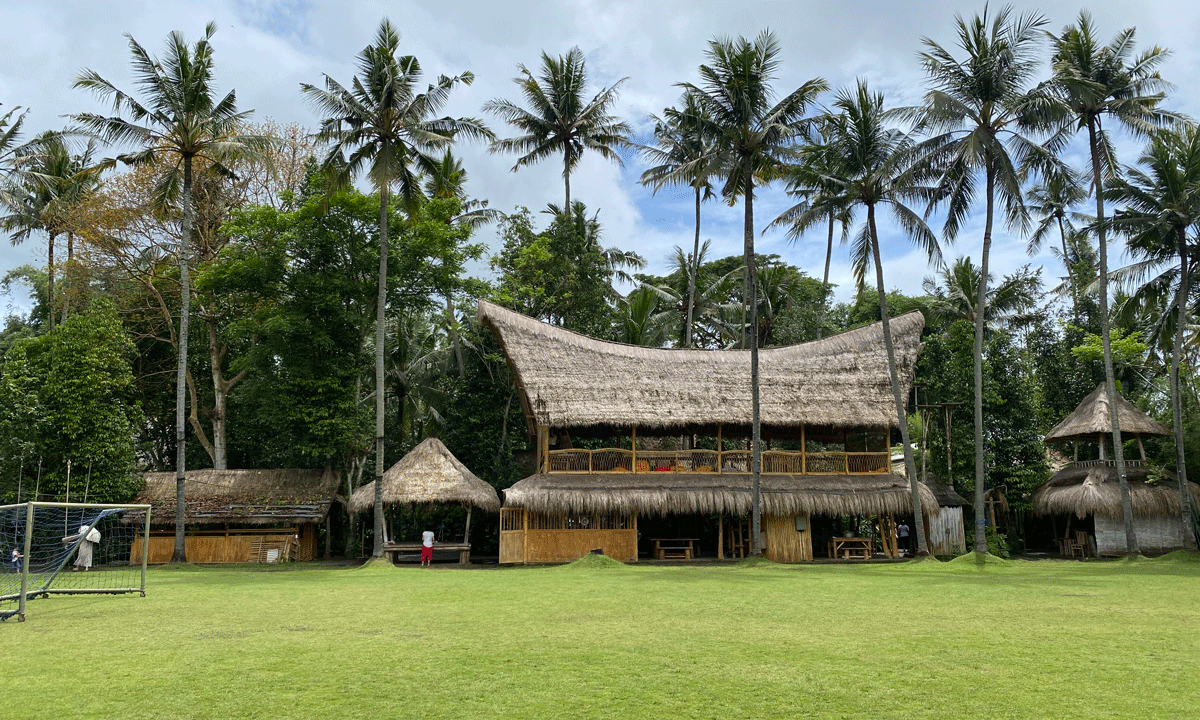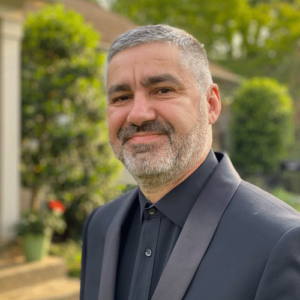Around the World, Teens Raise Fish for School Lunch, Turn Cooking Oil to Fuel
After 12 Months Touring High Schools in 34 Countries, What the U.S. Can Learn From Truly Innovative Schools Across the Globe.

Get stories like this delivered straight to your inbox. Sign up for The 74 Newsletter
Picture a school where students collaborate with engineers to solve the world’s greatest challenges, big and small. A place where students construct mountain bikes from native bamboo using math and science, learn how to make biodiesel fuel from used cooking oil and grow, harvest and prepare sustainable meals.
This is not an imaginary scenario — these lessons and activities are happening at real schools around the world. And the lessons their students are learning, both formal and informal, as they follow their own curiosity, are invaluable as they grow as stewards of our future. We can see it in how two schools, in particular, approach climate change.
The Green School Bali set out to build the most sustainable school on the planet. Indonesia is an archipelago with 180 million people living in coastal regions. It faces the imminent threat of rising sea levels and is no stranger to weather-related disasters. Green School Bali is a much-needed inspiration for environmental education far beyond its borders. Students at this international school actively learn about sustainable agriculture, renewable energy systems and ecological conservation, applying fundamental literacies such as critical thinking and writing. They demonstrate what it means to be original thinkers for an uncertain world.
A continent away in Hungary, REAL School Budapest addresses similar concerns in a different way by focusing on alternatives to dangerous, unsustainable agricultural practices. The school opened a vegan cafeteria that supplies delicious, locally-sourced food for school lunches and the public. Students have a voice in the menus, are involved in the food planning and learn valuable lessons about supply, demand and food sources. By providing families and community members with tasty vegan food, the school encourages the community to lower its meat intake, thus decreasing the need for unsustainable farming practices.
I saw this all first hand last year, during a 12-month transformational journey exploring innovative educational practices in 34 countries on six continents. I approached this exploration as a life-long educator and co-founder of Crosstown High, a diverse-by-design high school in the heart of Memphis, Tennessee. Here, students use project-based learning in all of their classes to make education more meaningful, often in collaboration with nonprofits and researchers.
For my tour, I wanted to see what commonalities exist among innovative schools worldwide. I also wanted to see how world events like political shifts, war, youth movements, human migration and climate change affect teaching and learning.
As an educator committed to preparing students for an uncertain future in a swiftly evolving world, my main focus was learning how schools across the globe approach similar goals: namely, how they’re helping students become generous collaborators and original thinkers — all while mastering foundational knowledge and fundamental literacies. These learner outcomes guide teaching and learning at Crosstown High and in other innovative, student-centered schools across the country.
For more ideas on rethinking the high school experience, read The XQ Xtra — a newsletter for educators that comes out twice a month. Sign up here.
Student-Led Innovation Creates Sustainable Schools
Around the world, schools embody the same learner outcomes we use at Crosstown and other XQ schools to prepare students for these immense challenges.
“Change starts with an idea, an intention or a problem to be solved,” said Green School Bali Principal Sal Gordon. School educators tasked their students with researching the greatest environmental impacts on their local school community. Through an extensive study of numerous factors, students identified automobile traffic on campus as a leading contributor. With the help of engineers, chemists and automotive experts, students developed a process to convert school buses from diesel to cooking oil for fuel, which they collected from local restaurants.
Each week, students in the “Grease Police” procure the oil from a 15-mile radius of the school for refinement and use as fuel, providing a greener alternative to school transportation. Through this kind of project-based learning and hands-on experiences, they gain a profound understanding of the interconnectedness between their actions and the environment.
The school’s entire facility encourages this type of learning. Each open-air classroom is constructed of bamboo and thatch, with tables and chairs made locally from sustainable products. Students also manage their own lush gardens at each grade level that provide food for school lunches. They eat fish grown in the student-managed aquaponic system and eggs harvested from the fifth-grade chicken coop.
In Hungary, REAL School Budapest Founder Barna Barath intentionally designed the vegan cafeteria to serve as a living example of the school’s purpose. In a traditional school system, a common purpose is to prepare students for postsecondary opportunities that provide individual prosperity. At REAL, the purpose is to live a purposeful and fulfilling life for collective prosperity. Students and parents invest in that vision for the betterment of the community. REAL’s educators are creating a community space and showing what it means to be learners for life and generous collaborators.
Connect Student-Directed Learning to Academic Standards
Educators at schools anywhere can prepare students for an uncertain future, specifically where that uncertainty relates to environmental change. A key takeaway from the two schools in Indonesia and Hungary is letting students take the lead in their learning. In each case, students investigated problems and found solutions, resulting in deep learning. There are many examples of schools doing similar work in the U.S. At Crosstown High, science teacher Nikki Wallace lets students take the lead by connecting them with local researchers through powerful community partnerships.
We need to think big. Assigning simple projects around collecting plastic bottles or bags isn’t enough to move the needle on the environment and won’t truly engage kids. Even though Indonesia has specific concerns about rising sea levels, schools anywhere can — and should — engage students in learning about and studying the effects of droughts, heatwaves, floods and storms that result in crop failure and food scarcity. Here are a few steps to get started:
- Get students to think audaciously about solving local problems. What’s the big issue facing their neighborhood, town, county or state? How can they learn about it? Who can help them uncover solutions? For example: What is the condition of the local water source? What in the community is impacting local water? Who in the community can share expertise around this issue?
- As they problem-solve, consider all connections to academic standards. How do research and problem-solving by students connect to the learning standards in your state? This is the crucial jumping-off point for connecting “academic” knowledge to “real world” solutions. At Crosstown High, we’ve done an in-depth study of human migration involving people who immigrated to Memphis. This project closely relates to the standards covered in our history, geography, sociology and psychology courses.
- Get outside the box. Keep asking, “Why?” and push your students to think bigger and broader before zeroing in on the small tasks. At Crosstown, our students conducted an in-depth project on how life could exist on Mars. This encompassed everything from food sources, water, breathable air, transportation and architecture. They used persuasive writing and research — touching practically every subject area.
Unlock Students’ Passion and Curiosity
Helping students find the urgency and passion in learning, and the joy of finding a solution, are key components to solving increasingly urgent local and global issues. But they’re also the ingredients we need to make learning, in general, more engaging and relevant to high school students. Our high schools can and should do a better job cultivating students’ natural passions and curiosities, helping them discover how their unique gifts, talents and interests help them meet the challenges of an uncertain future. Understanding their place in that future builds the confidence needed to be a change-maker.
Luckily, students are naturally forward-focused. They constantly think about what life will be like when they grow up. We can improve the high school experience by activating their natural curiosity and augmenting it with essential skills such as critical thinking, creative problem solving, information gathering and collaboration.
All of these skills are necessary for college, career and the real world. By combining passion, urgency, curiosity and essential knowledge and skills, our students can grow into the superheroes our planet needs to lead urgent and necessary change on the local, national and global stages. Schools around the world are setting examples, and we can, too.
Want more ideas for making your high school more student-centered? The XQ Xtra is a newsletter for educators that comes out twice a month. Sign up here.
Disclosure: The XQ Institute is a financial supporter of The 74.
Get stories like these delivered straight to your inbox. Sign up for The 74 Newsletter

;)
